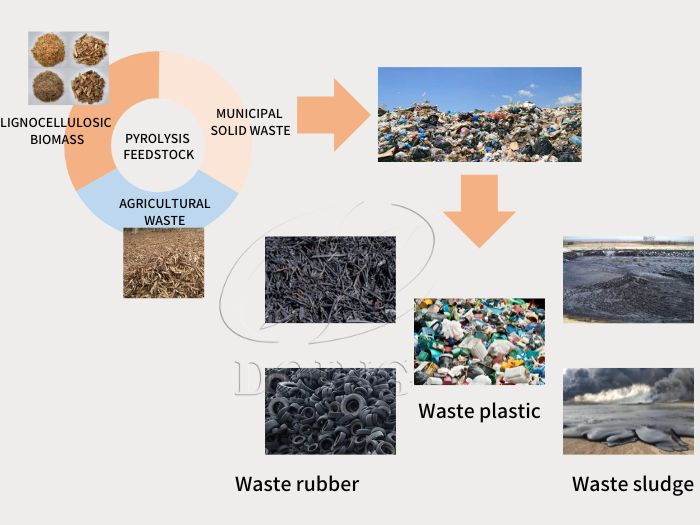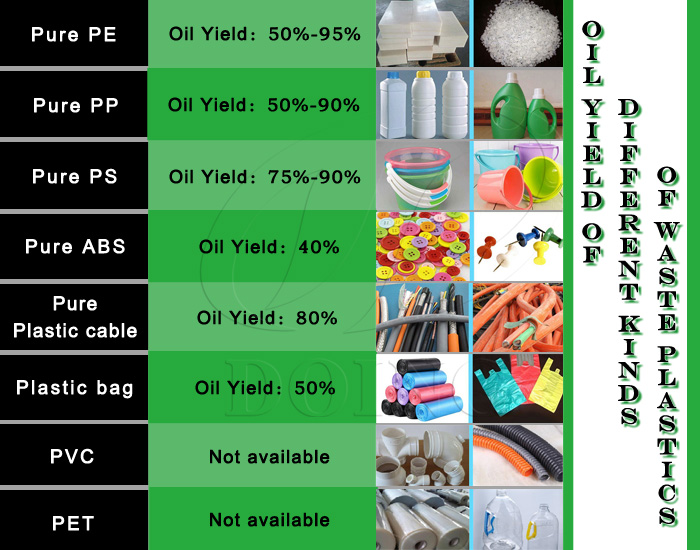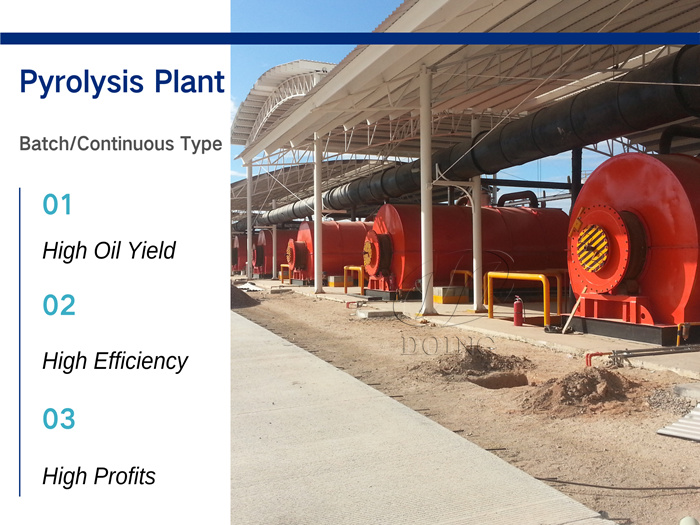 WhatsApp
WhatsApp

Pyrolysis is a process of breaking down organic materials into energy and fuel through high temperature heating. The feedstock for pyrolysis plant can come from a variety of sources, including lignocellulosic biomass, municipal solid waste, and agricultural waste.
1. The pyrolysis plant feedstock of lignocellulosic biomass: sawdust, blocks, chips, lumber, etc.
2. The pyrolysis plant feedstock of municipal solid waste: household garbage, construction waste, industrial waste, agricultural waste, etc.
3. The pyrolysis plant feedstock of agricultural waste: straw, rice straw, wheat straw, peanut shells, corncobs, vegetable leaves, bean straw, etc.
 The feedstock of pyrolysis plant
The feedstock of pyrolysis plant
Among all the above raw materials that can be used for pyrolysis plant, the municipal solid waste pyrolysis technology is currently the most mature, and the fuel recovered and converted is the most. Among the municipal solid waste, such as waste rubber(waste tires), waste plastic(PP,PE,PS and aluminum-plastic), waste sludge(oil sludge, coal tar), these pyrolysis plant feedstock are the most popular. The following will take DOING pyrolysis plant as an example to introduce these feedstock.
They are mainly tires. Waste tires can include large cars, truck tires, engineering tires, cars, motorcycles, bicycle tires, etc. Apart from that, some rubber products can also be used as pyrolysis plant feedstock, such as rubber racetracks, rubber soles, cable skins, rubber insoles, etc.. Its oil yield is about 40-45%, and the higher the rubber content, the higher the oil yield of the pyrolysis project.
They are more complex raw materials in pyrolysis projects, because there are different types of plastics in our lives, such as PP, PE, PS, ABS, PET, PVC and so on. Not all plastics are suitable for use as feedstock for pyrolysis plants, such as PET and PVC raw materials. PET is an alcohol ester plastic, after heating will not produce hydrocarbons (oil and gas). Although PVC can be used for pyrolysis, in the heating process it will release chlorine gas, and there is a certain damage to the reactor. If you cannot avoid using PVC for your raw materials, please be sure to inform the DOING business manager in advance so that they can help you provide a suitable solution.
 The oil yield of different plastics
The oil yield of different plastics
The oil yield of plastic is not fixed, and it might be from 40% to 90%. You can contact DOING, tell them what kind of plastic you contain, so that the business manager will more easily help you calculate the daily profit of your project.
In addition, there is a mixture of plastic and aluminum —— aluminum-plastic, which are emerging raw materials in recent years. From this material, you can get not only fuel oil, but also aluminum ingots. The ratio of oil yield and aluminum ingot is determined according to the proportion of your raw material.
Due to the special form of waste oil sludge and coal tar, there are several pyrolysis plant designs that differ from common raw materials such as tires and plastics. If your pyrolysis feedstock is this, the professional technical team of DOING will design a more appropriate design according to whether your sludge and tar flow.
The oil yield of waste oil sludge is 20-70%, it depends on the content of impurities.
 DOING waste rubber plastic sludge pyrolysis plant
DOING waste rubber plastic sludge pyrolysis plant
Here you have a general understanding of the most popular pyrolysis plant feedstock(also can be processed by DOING pyrolysis plants). If you have these feedstock and plan to start a pyrolysis business, welcome to consult us. If you have pyrolysis plant feedstock other than those mentioned above, you can contact the DOING business managers to let them help you judge whether it is suitable for pyrolysis projects.
contact us
CONTACT US